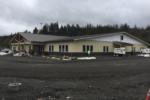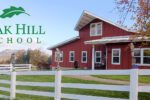Springfield Chamber Redistricting Testimony
DATE: September 10, 2021
TO: Members of the Oregon House and Senate Interim Committees on Redistricting
RE: Comments from the Springfield Area Chamber of Commerce, Public Hearing for Congressional District 4
FROM: Vonnie Mikkelsen, President and CEO; and Charlie Kimball, Chair, Board of Directors
The Springfield Area Chamber of Commerce serves more than 700 employers of nearly 25,000 individuals in Springfield and surrounding communities across Lane County. While diverse in political views, education levels, professional ambitions, and community values, our members share a commitment to creating economic opportunity for all families and communities. Our region’s vast economic, geographic, and socio-political diversity is our strength and redistricting an opportunity to recalibrate to ensure that all feel heard and represented.Our members are primarily small and medium-sized enterprises located within or employing a workforce represented by Congressional District 4, House Districts 7, 8, 9, 11, 12, 13, and 14 and Senate Districts 4, 5, 6, 7 in Lane County; and as far north as House Districts 15, 16, 17, and 23 and Senate Districts 6, 8, 9, and 12 of Linn and Benton Counties.
Our lens is that which places highest priority on communities of common interest defined by distinct and similar socio-economic factors, community development experiences, and common policy priorities that serve those communities.
- Lane County’s economy is diverse, primarily small and medium sized enterprises, based largely in small towns like Springfield and rural areas. We propose when adding population to a single district or coupling districts, a priority be given to fair and equal representation of all small, medium-sized and rural community populations;
- That can be accomplished by looking first to communities of distinct common interest to add population to a single house district and by avoiding the coupling of neighborhoods of highly uncommon interests, even unnecessarily splitting urban center populations to combine with smaller towns or rural communities when these are socio-economically distinct and their community issues and needs are vastly different.
- From the perspective of our core service area, Springfield:
- We support all proposed maps that provide the City with a legislative district, HD 12;
- We urge the committee reconsider the Senate district coupling of HD12 in a manner consistent with the principles of communities of common interest and suggest south and central Eugene neighborhoods as urbanized, no growth, high density student and high-income residential populations diverge from that principle;
- We are concerned that the nesting proposals of Senate District Plans A, B, and C all couple HD 12 with a district incorporating south or central Eugene population; this unnecessarily deviates from a precedent that is working and dilutes the fair representation of communities of common interest;
- An example of a more aligned coupling would be that of HD12 and HD13 as drawn in House Plan B;
- Including populations of small towns and largely rural economies to the north, east, and south of Springfield would assure highest alignment with the principles of communities of common interest;
- We offer a one-page supplement (following) suggesting boundaries and features of communities of common interest as supplement to this testimony.
The Chamber provides a platform for informing and engaging in dialogue between community members and local, state, and federal policymakers on the needs and interests of our communities. We remain ready to support non-partisan efforts to ensure all Oregonians are given fair and balanced representation at local, state, and federal levels.
Supplemental information: We offer census data*, economic factors, and the experience of shared community priorities, concerns, and issues as defining and distinct features of Communities of Common Interest.
- Geographic Boundaries Contiguous with Springfield UGB: Mohawk/Marcola Valley, southern Linn County communities of Sweet Home, Lebanon, Brownsville, Calapooia, Halsey-Sweet Home, Coburg and Coburg Hills; McKenzie River Corridor north, east, and northeast of Springfield; and south Lane County to Goshen, Pleasant Hill, Creswell, Oakridge, Cottage Grove.
- Transportation Connectors: Interstate 5, Hwy 58, 126, 20, 34, 228, and state/local/rural commuter and commercial arteries.
- Economy and Workforce:
- Our anchor industries are Natural Resources, Wood Products, Manufacturing, Tourism, Agriculture;
- Our economies share common industry and pro-business and economic opportunity growth cultures focused on small and medium sized enterprise, workforce, supply chain, and infrastructure;
- We share an interest in growing our small-town economies and preserving critical agricultural, forest products, micro-enterprise industrial, and recreational tourism industries;
- We are commonly aligned in our approach to, and our communities actively employed in, natural resource and forest management making us resourceful partners for wildfire and other natural disaster preparedness, management, and response;
- Our workforce is primarily blue-collar, skilled, living and working either within local communities or commuting to jobs in those industries of importance to our regional economies.
- Education
- We have commonly shared gaps, priorities and needs around education and advocate for investments in robust career and technical education, apprenticeships, and workforce development to fulfill our industries of common interest.
- Broadband Service and Computer Use:
- We have similar needs and approaches to modernize our technology infrastructure supporting development priorities specific to our communities including that of improved access to broadband internet, remote workforce, and computer usage.
- Housing and Income:
- Our communities’ median household and per capita income levels skews lower than urban centers;
- Our owner-occupied housing rates are higher and our housing costs are 25-30% lower in both median mortgage and rents.
- Competitive Advantage:
- We share common competitive advantage challenges and approaches to sustain, grow and attract families, workers, and business to our community;
- We share common challenges and socio-economic factors around affordable workforce housing, utilities, roads, childcare, healthcare, and natural/historical/cultural asset investments; and find alignment in our approach to solutions, opportunities, and resource advocacy.
*Census data sampling of communities of common interest
Learn more: Oregon State Redistricting Information (oregonlegislature.gov)
Follow Chamber advocacy: Advocacy & Elections – Springfield Area Chamber of Commerce (springfield-chamber.org)

Discover more from Springfield Bottom Line
Subscribe to get the latest posts sent to your email.






